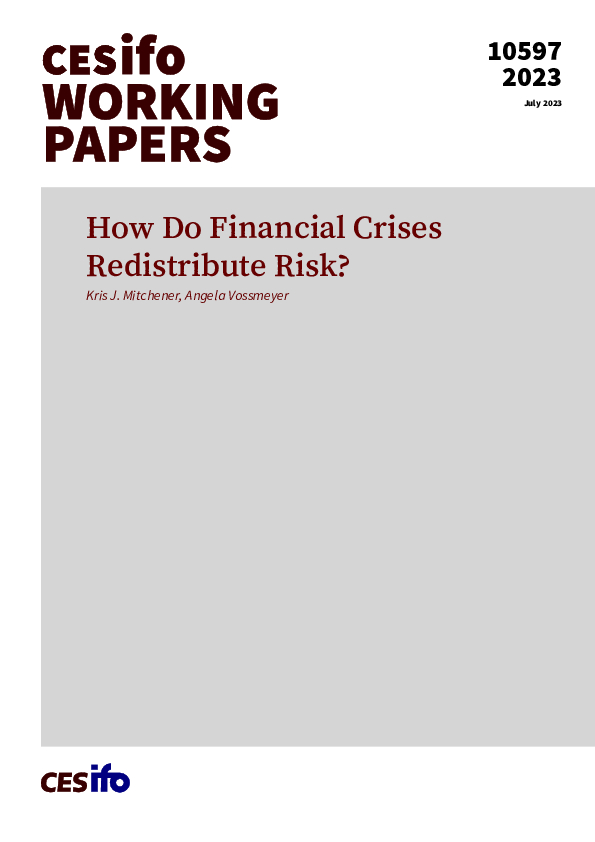How Do Financial Crises Redistribute Risk?
CESifo, Munich, 2023
CESifo Working Paper No. 10597

We examine how financial crises redistribute risk, employing novel empirical methods and micro data from the largest financial crisis of the 20th century – the Great Depression. Using balance-sheet and systemic risk measures at the bank level, we build an econometric model with incidental truncation that jointly considers bank survival, the type of bank closure (consolidations, absorption, and failures), and changes to bank risk. Despite roughly 9,000 bank closures, risk did not leave the financial system; instead, it increased. We show that risk was redistributed to banks that were healthier prior to the financial crisis. A key mechanism driving the redistribution of risk was bank acquisition. Each acquisition increases the balance-sheet and systemic risk of the acquiring bank by 25%. Our findings suggest that financial crises do not quickly purge risk from the system, and that merger policies commonly used to deal with troubled financial institutions during crises have important implications for systemic risk.
Monetary Policy and International Finance